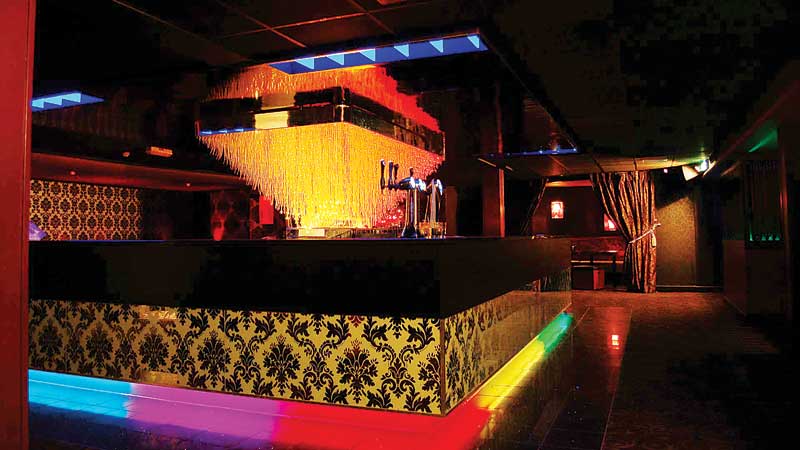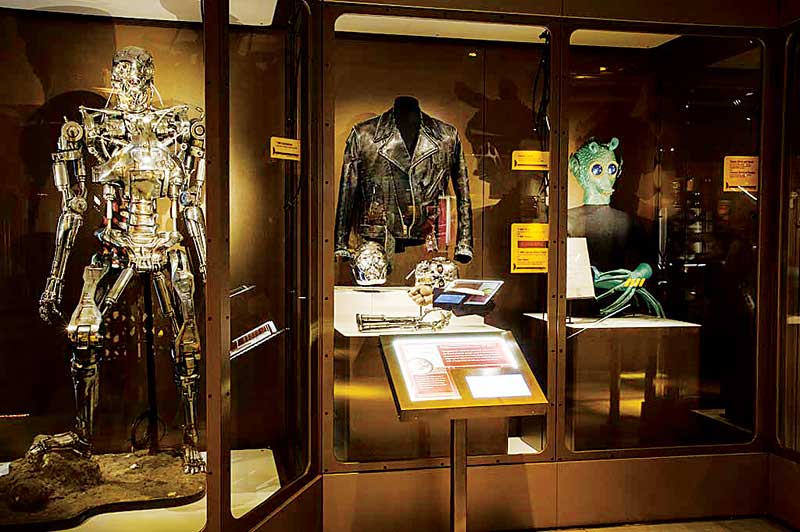
An illuminator can support special lighting effects, such as colour changes, pulsing and twinkling.
Photos courtesy UFO Lighting
The high level of energy in UV radiation—as emitted by the sun and, to a lesser degree, by fluorescent tubes, metal halide lamps and mercury vapour lights—is especially damaging. UV light is not visible to the human eye, however, so it can be removed from museum exhibit illumination to help protect artifacts without causing any change in appearance.
At the other far end of the spectrum, IR radiation can also prove problematic by causing a rise in temperature when it is absorbed. Fortunately, it too is invisible to the human eye and, thus, can be removed. As mentioned earlier, acrylic fibre optic cabling is opaque to both of these types of radiation.
Even LEDs can cause colour temperature problems. The viewing of classic Impressionist paintings by Vincent Van Gogh and Pau Cézanne, for example, has been negatively affected by LED lamps in museums. Investigators explain these masters’ yellow paint work has instead appeared olive green and brown, due to the high quantity of blue light routinely emitted by the LEDs.
As a result, many museum curators and directors have been rethinking how they illuminate their exhibits. Luxam, a company that specializes in lighting for museums, has turned to fibre optics both to improve light intensity and to deliver a more favourable colour temperature compared to other systems.
The controllable nature of optical fibres via an illuminator is especially helpful for museum exhibits—not merely to turn the lights on or off, but also to showcase differences in colours in artifacts. Further, since fibre optic cables allow an entire object in a display case to be illuminated from a single light engine, the overall presentation allows for more accurate colour comparisons than are possible with individual lights that may not perform exactly the same as each other.
In everyday lighting, all of this precision may not seem like a big deal, but frequent museum visitors appreciate being able to view relics and pieces of art worth millions of dollars under truly balanced lighting. And colour temperature is certainly important in the sign industry, with respect to ensuring accurate colour management for today’s highly brand-sensitive clients.
Experimenting with components
While fibre optic technology can offer many benefits, some experimentation may be needed. Even the Fiber Optic Association (FOA) itself admits the industry is lacking in standardization. With a broad variety of proprietary products available, it can be hard to generalize about how best to design systems.
That said, every design project will start with some questions in common:
- What is to be illuminated?
- What kind of light is desired (in terms of intensity, pattern, colour and variety)?
- Where and how will the light be output?
- Where will the light engine be placed?
And finally, there is the matter of lensing. By combining optical fibres with lenses, light can be carefully focused on extremely specific points. This capability has already proven popular for jewellery displays and museum exhibits, among other applications.
Stephen Montgomery is president of international business expansion for ElectroniCast Consultants, which forecasts technology trends in the
fibre optic, light-emitting diode (LED) and photonics markets. For more information, visit www.electronicast.com.







Thank you for the insight. I made a search and led me to this post, now it’s 2024, why isn’t this product seeing the light in signage or at least I’m not seeing it 🙂